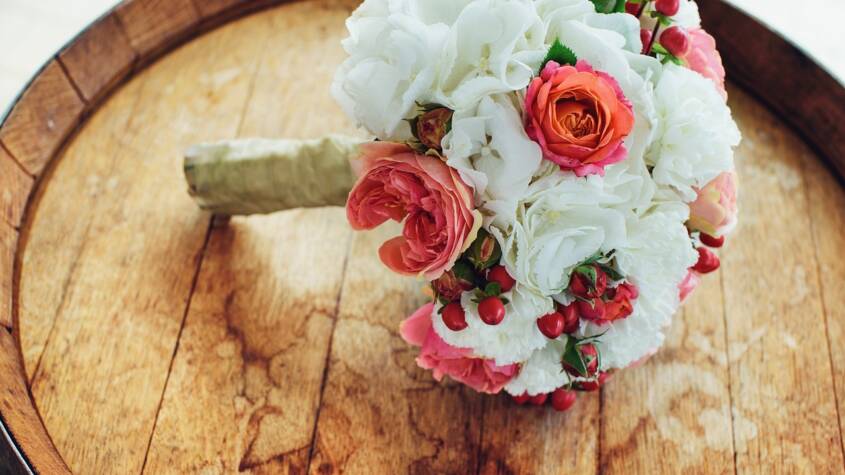
Creating a custom flower bouquet allows individuals to express their unique style and emotions. This personalized approach not only matches the recipient’s taste but also enhances the significance of the gift. Whether for a special occasion or simply to brighten someone’s day, a tailored bouquet can convey thoughts and feelings that generic arrangements may not.
When selecting flowers, factors like color, fragrance, and texture come into play. A skilled florist can help guide choices based on the recipient’s preferences and the intended message. This attention to detail transforms every bouquet into a meaningful work of art.
Custom flower bouquets are perfect for celebrating milestones, expressing gratitude, or offering comfort. Their uniqueness makes them memorable and cherished, ensuring that each gesture stands out. By choosing a bespoke arrangement, one elevates the art of gifting to a memorable experience.
Designing Your Custom Flower Bouquet
Creating a custom flower bouquet involves careful selection of flowers, a strong understanding of color theory, and the thoughtful incorporation of various textures and shapes. Each element plays a crucial role in ensuring the bouquet is aesthetically pleasing and meaningful.
Choosing the Right Flowers
Selecting flowers is the first step in designing a custom bouquet. Factors like the occasion, seasonality, and personal preferences greatly influence this choice.
- Occasion: Different flowers convey different meanings. For weddings, roses symbolize love, while lilies may represent purity.
- Seasonality: Certain flowers are more abundant in specific seasons, which can affect availability and price.
- Personal Preference: Individual tastes matter. A favorite flower or one that holds personal significance can elevate the bouquet’s emotional impact.
Knowing what each flower represents enhances the design process and ensures the bouquet resonates with the recipient.
Understanding Color Theory
Color theory is vital for creating visually harmonious bouquets. Colors evoke emotions and set the overall mood.
- Complementary Colors: Pair opposite colors on the color wheel for a vibrant contrast. For example, red and green create a striking visual effect.
- Analogous Colors: Use colors next to each other on the wheel for a more serene look, such as blues and purples.
- Monochromatic Schemes: This involves using variations of one color. Different shades of pink can create depth and interest.
Strategic color combinations elevate the bouquet’s appeal and cater to the recipient’s taste.
Incorporating Textures and Shapes
Textures and shapes add dimension and intrigue to a bouquet. Variety makes the arrangement visually dynamic.
- Textures: Incorporating flowers with different textures, such as the softness of peonies against the sturdiness of succulents, enhances tactile interest.
- Shapes: Consider the overall shape of the bouquet. Round shapes often convey harmony, while cascading shapes can symbolize elegance and romance.
- Foliage: Adding greenery not only complements the flowers but also provides a lush appearance.
Balancing these elements creates a bouquet that is not only beautiful but also tells a story through its design.
Care and Maintenance
Proper care and maintenance are crucial for extending the life of a custom flower bouquet. Key aspects include watering, feeding, pruning, and choosing the right placement for optimal growth and display.
Watering and Feeding
To maintain freshness, it is vital to keep flowers hydrated. Each bouquet should be placed in fresh water, ideally at room temperature, with a clean vase.
- Change the water every two days to prevent bacteria growth.
- Use floral preservatives to nourish the blooms. These often contain nutrients that enhance longevity.
- Ensure that the stems are trimmed at an angle to promote water absorption.
For flowering plants, additional feeding may be necessary every few weeks. This encourages vibrant blooms and healthy foliage.
Pruning and Deadheading
Regular pruning and deadheading are essential for keeping a bouquet looking its best.
- Deadheading involves removing wilted flowers to stimulate new growth.
- Use sharp scissors to cleanly snip the stems just above a leaf node.
For plants included in the bouquet, prune any yellow or brown leaves promptly. This prevents deterioration and maintains aesthetic appeal.
Pruning should be done as needed, based on the type of flowers used.
Optimal Placement and Light Requirements
The right placement can significantly affect a bouquet’s longevity.
- Most flowers thrive in indirect sunlight, so avoiding direct sunlight is important.
- A temperature range of 65-75°F (18-24°C) is ideal for most blooms.
Place the bouquet away from drafts and heat sources, like radiators, to prevent wilting.
Regularly check the light levels throughout the day to ensure the flowers receive adequate, but not excessive, light. This balance promotes health and vibrancy in the bouquet.
Dumpster Near Me: Find the Best Local Rental Options for Your Needs
Finding a dumpster near me can streamline your cleanup efforts, whether it’s for a h…








